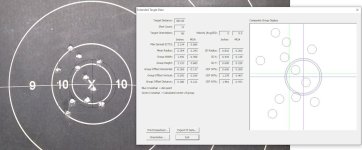https://royalsocietypublishing.org/doi/10.1098/rspl.1901.0052#d1631807e1
The above was published over a century ago.
I have always seen the scope reticle bounce and wiggle on target. Heartbeats expand and contract muscles which moves the bones supporting the rifle. Nobody holds rifles perfectly still. One third MOA is about as small an area us live humans can keep the line of sight inside of.
As the barreled action is held by the stock, any external force on the stock effects the barrel's movement while bullets go through the barrel. Slung up in prone, a free floated barrel will string shots horizontally as the slung arm's elbow is moved sideways.on the ground. Easily observed shooting 22 rimfire ammo at 50 yards.
The above was published over a century ago.
I have always seen the scope reticle bounce and wiggle on target. Heartbeats expand and contract muscles which moves the bones supporting the rifle. Nobody holds rifles perfectly still. One third MOA is about as small an area us live humans can keep the line of sight inside of.
As the barreled action is held by the stock, any external force on the stock effects the barrel's movement while bullets go through the barrel. Slung up in prone, a free floated barrel will string shots horizontally as the slung arm's elbow is moved sideways.on the ground. Easily observed shooting 22 rimfire ammo at 50 yards.
Last edited:

